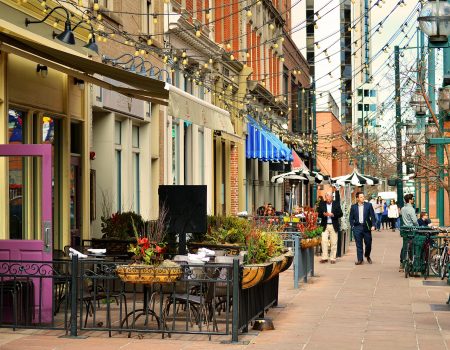The residential property market has recovered in the United States a decade after the housing crash but millions of home owners are still waiting to regain the value that was lost.
Overall, the median home value nationwide is 8.7% higher than it was at the height of the housing bubble and 21 of the top 35 metros have more than recovered from the bust, according to the latest analysis from real estate firm Zillow.
But it is not a universal recovery. While San Jose and Denver lead the recovery with huge gains, locations such as Las Vegas, Orlando and Chicago have been the slowest to recover.
San Jose is the nation’s most expensive metro with a current median home value of $1.29 million, some 74% higher than the top of the bubble and more than double its post-crash low.
Denver follows with a median value of $397,800, a 66% increase from the bubble’s peak, though, unlike other parts of the country, Denver never experienced a rapid run-up of prices during the bubble years.
But homes in Las Vegas, which have seen some of the steepest gains in the country over the past year, remain 16% below their pre-bust median value. Orlando and Chicago home values remain nearly 14% below.
After the collapse of Lehman Brothers in September 2008 home values across the US had dropped by 17% by the end of 2011 and close to a third of home owners were underwater in their mortgages. Millions of people lost homes to foreclosure.
Today, median home values nationwide are about 8.7% above what they were at the bubble’s peak, and more than half the nation’s homes have regained their lost value. Less than 10% of home owners are underwater on their mortgages, though that number jumps to the mid-teens in markets like Chicago and Baltimore where recovery has been stubbornly slow.
‘A decade after the financial crisis it’s clear that, just as the bust was felt very differently across the country, so has the recovery. Looking back, the housing bust was a rare historical moment when housing markets across the country moved in sync,’ said Zillow senior economist Aaron Terrazas.
‘While markets like San Jose, San Francisco and Denver have led the country out of the bust and are doing very well, in many cases now dealing with an affordability crisis, plenty of markets continue to bear visible scars from the crash,’ he pointed out.
‘Homes that still are worth less than they were a decade ago mean more long term home owners remain tethered to underwater mortgages, still struggling to regain that lost value. In the markets that have seen the strongest recoveries, a combination of strong job growth, tight supply and low interest rates have pushed home values upward. But in places that continue to struggle, the stimulus of low mortgage rates is quickly turning to a headwind and the window for a full recovery is quickly closing,’ he added.
He also explained that following the crash, lending tightened significantly and inventory reduced throughout the country. Nationwide, the median home value is now about what it would have been had values continued on the pre-bubble trend without a bubble or bust. Home ownership rates nationally are beginning to climb but are still down more than 4% from 2006.
Original article on propertywire
